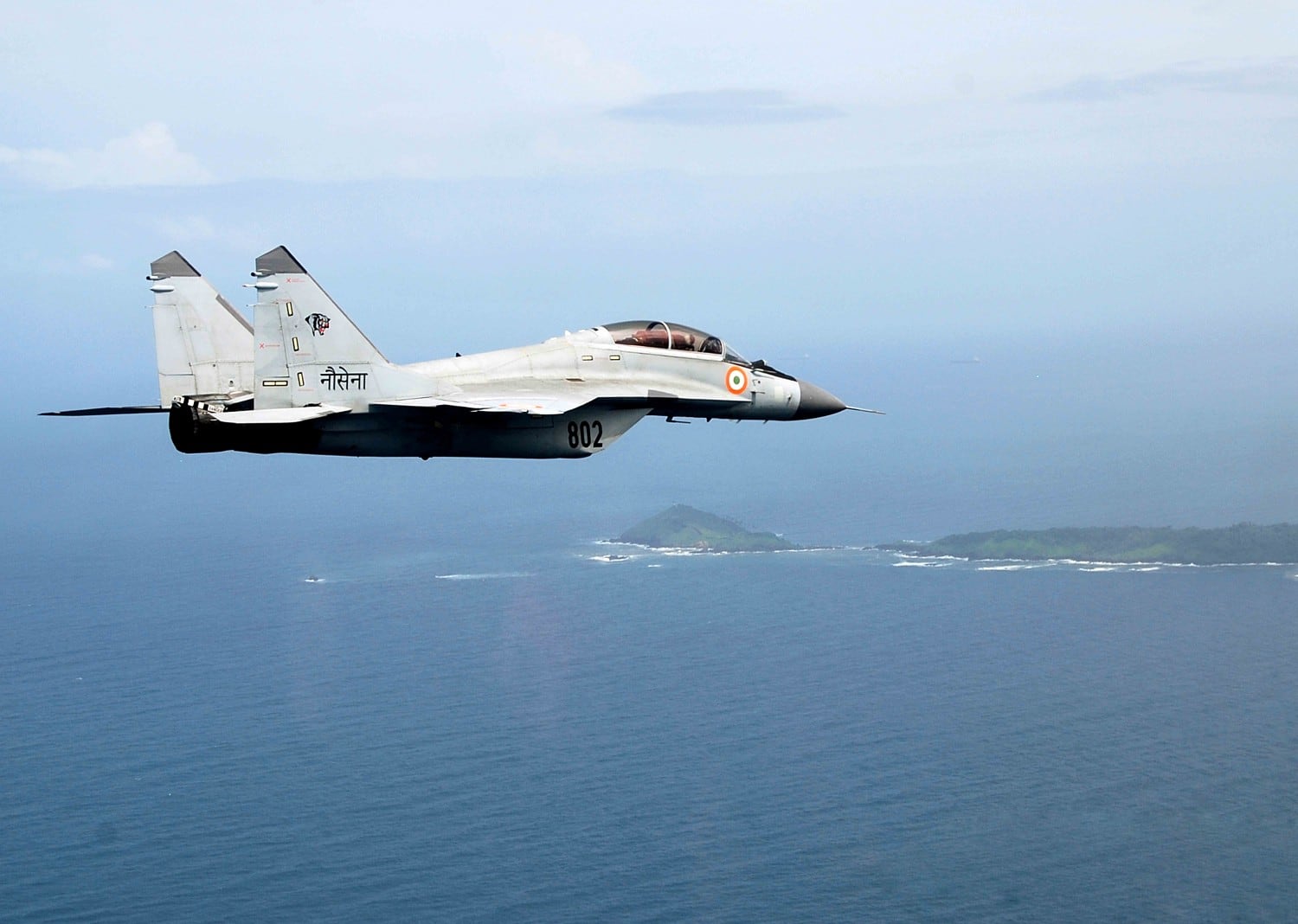This story has been updated to include comment from Russian Aircraft Corporation MiG.
NEW DELHI — The Indian Navy is facing acute maintenance problems with the 45 Russian-made MiG-29K aircraft, which are the sole fighters on the aircraft carrier INS Vikramaditya, according a senior Indian Navy official.
“We (Indian Navy) want the MiG-29K aircraft to be ruggedized to carry out operations because landing on the deck of the aircraft carrier is almost like a hard landing and the fighter aircraft needs frequent maintenance,” the Navy official said.
“There are frequent structural defects due to deck landing,” the official added.
The service did not enter into a contract for automatic maintenance of the aircraft with the Russians while purchasing the MiG-29K fighter aircraft in 2004 and 2010 for $2.2 billion.
“Today they are fully dependent on Russia for all major support issues,” an Indian Ministry of Defence official said of the Navy. “The Indian MoD has taken up the matter with the Russians on several occasions. Though the Russians have sent their technical teams, no solution has been forthcoming.”
However, Anastasia Kravchenkov, a representative of Russian Aircraft Corporation MiG, said in official correspondence: “Neither we, nor our partners have received any official claims about operational problems with the Russian MiG aircrafts.”
Arun Prakash, a retired Indian Navy admiral and former service chief, was more critical of the situation: “The truth is that the Indian Navy has virtually funded the development of this aircraft (which the Russian Navy is now adopting), and if the Russians had any ethics they would ensure that every shortcoming is fixed free of cost.”
RELATED

According to the MoD official, state-owned Hindustan Aeronautics Limited is of little help in this situation: “Without approval of design authority, it is difficult to go in for any modification.”
HAL is currently seeking funds from the Navy for the maintenance and overhaul of 113 engines including spares.
According to the MoD official, the government would prefer an agreement involving the Navy, Russia and HAL to undertake structural improvements for the MiG-29K fighters.
The call for improved ruggedness originates from an issue after deck landings. The MiG-29K fighter’s settings reportedly require a reset after landing on the deck of the carrier.
“After every carrier landing (which is virtually like a crash), components of the aircraft crack, break or stop functioning. The aircraft, then goes to the workshop for repair/replacement of the part, which often has to come from Russia,” Prakash said.
A report last year by India’s autonomous auditing agency, the Comptroller and Auditor General of India, said the MiG-29K was to be technically accepted despite discrepancies and anomalies.
“Since induction in February 2010, 40 engines (62 percent) of twin-engine MiG-29K fighters have been withdrawn from service due to design-related defects,” according to the report.
Early last year, the Indian Navy entered the global market to procure 57 multirole fighters to be used on future aircraft carriers, essentially rejecting the MiG-29K fighters.
Although companies have already shown interest in India’s request for information — the United States’ Boeing with its F/A-18E/F Super Hornet; France’s Dassault with its Rafale M, Sweden’s Saab with its Gripen Maritime and Russia‘s MiG-29K — a formal tender to kick-start the acquisition process for a new fighter aircraft is yet to be issued.
Officials from the Indian Navy and the MoD would not comment on the fate of the purchase program.
Vivek Raghuvanshi is the India correspondent for Defense News.







